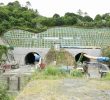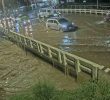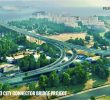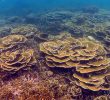“We are trying to complete the set of equipment needed by the city. It’s already fabricated. Now, it’s just a matter of installing them.” — Dr. Anthony Sales, Department of Science and Technology (DOST)-XI Director
By MARILOU AGUIRRE-TUBURAN
Davao Today
DAVAO CITY, Philippines – The city will soon have a complete set of equipment that will provide early warning, forecasting and weather monitoring.
“We are trying to complete the set of equipment needed by the city. It’s already fabricated. Now, it’s just a matter of installing them,” said Dr. Anthony Sales, Department of Science and Technology (DOST)-XI Director, in an interview.
The set, on the ground, includes an automated rain gauge, automated weather station and the water level monitoring system.
This is part of the Nationwide Operational Assessment of Hazards (Noah) Project, a flagship program of the DOST, to “address the hazards brought about by natural calamities including typhoons.” It was developed following a directive from President Noynoy Aquino after typhoon Ondoy ravaged Metro Manila in 2010.
Part of Noah Project’s early warning component, Sales said, is the installation of about a thousand automated weather sensors at the country’s 18 critical river basins, including the Davao River. The sensors will measure weather parameters, like rainfall, wind velocity and air pressure.
Sales said the units have been completed across the country. In Davao, the plan is to set up sensors at the interface between the watershed and the Davao River.
An automated rain gauge will also be installed which will measure the amount of rainfall, as well as put up water level monitoring sensors which will forecast flooding.
The output of the sensors will provide a basis for flood models of the critical river basins.
Sales said there is also the component of Light Detection and Ranging (LiDAR), a state-of-the art instrument that will produce three-dimensional (3D) maps of the said river basins, along with watersheds and flood-prone areas across the country.
LiDAR will develop high resolution topographic maps with a scale of 1:2,500 compared to the current 1:50,000 scale of maps provided by the Mines and Geosciences Bureau.
The said topographic maps will detect structures at the village level including houses, establishments and vegetation.
“This is more useful when it comes to planning and in the decision making process especially during disasters or emergency situation,” Sales said.
With the LiDAR maps, Sales said, the number of houses or establishments that will be affected by the typhoons or floods will be determined, and even the estimated cost of damage.
The LiDAR survey of Davao City and Compostela Valley, Sales said, was already done. It will be followed by Davao Oriental. Before February ends, Sales assured, the topographic maps will be available.
The DOST also uses other technologies like the Doppler radar and satellite data.
“These form part of the system that we’re trying to put in place in the 18 river basins in the country so that the data will be complete for the prediction of floods and the impact of calamities,” he said.
Satellite data, he said, will give a 48-hour lead time, before a typhoon, for example, will make its landfall.
In Mindanao there are currently two Doppler radars, one in Tampakan, South Cotabato and another in Hinatuan, Surigao del Sur.
LiDAR is said to be the most effective technique to measure elevation and depth of flooding. It would also tell if it’s safe to put up residential areas along the riverbanks, like in Davao City’s Bankerohan and Jade Valley.
The LiDAR technology has been applied in the United Kingdom. The Aquino government initially released PHP 1.6 B for the Noah Project. (Marilou Aguirre-Tuburan/davaotoday.com)










